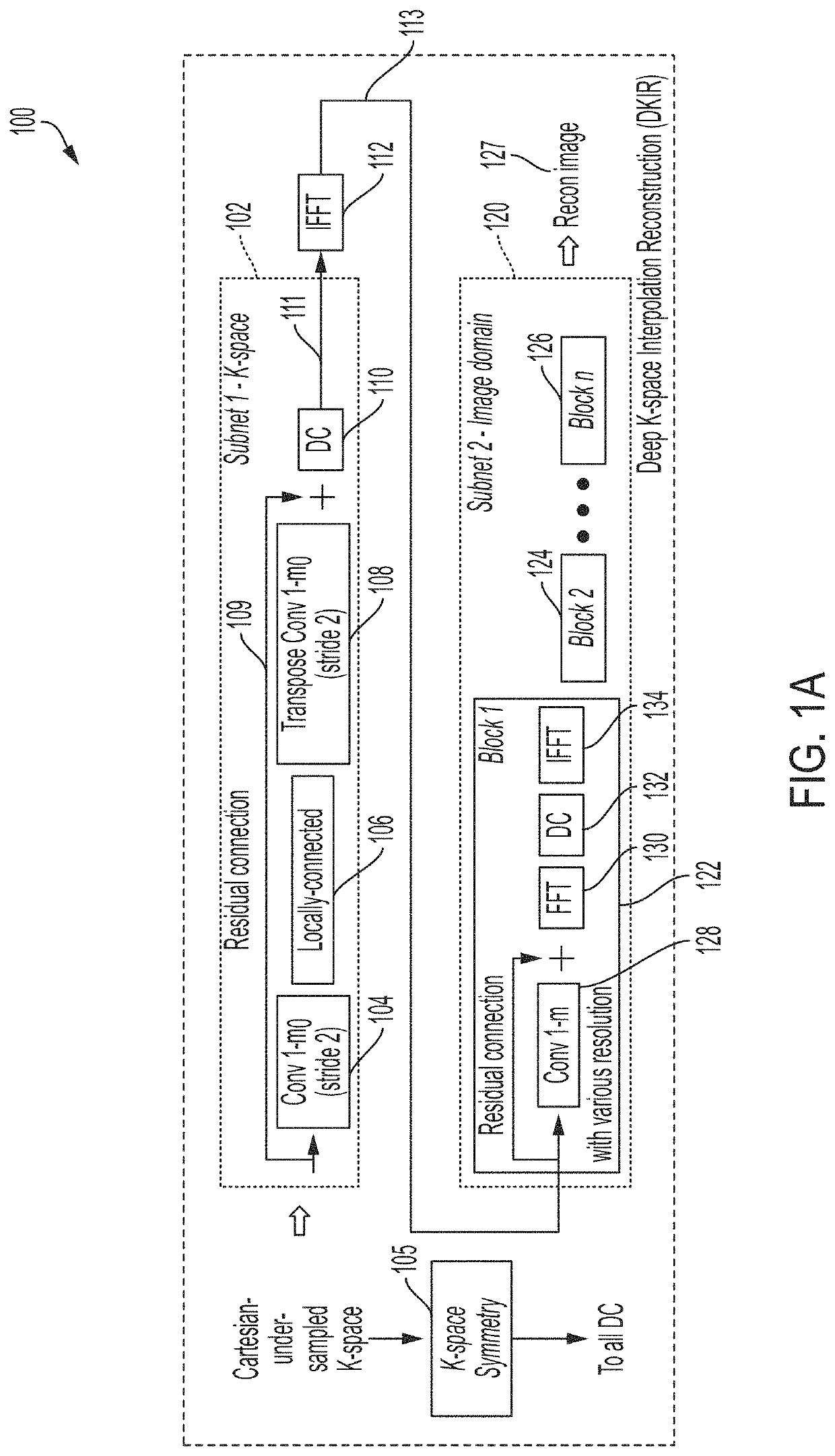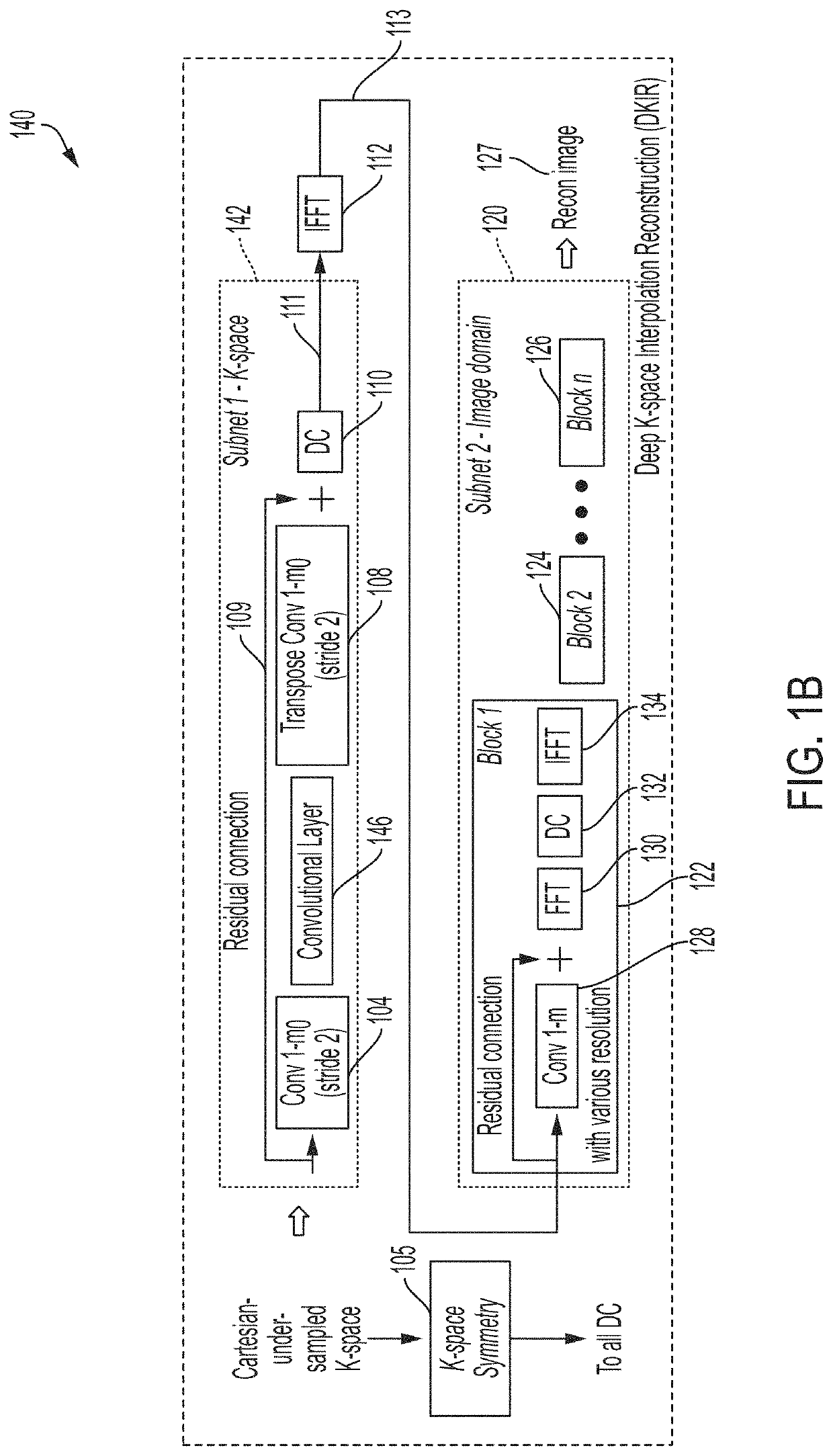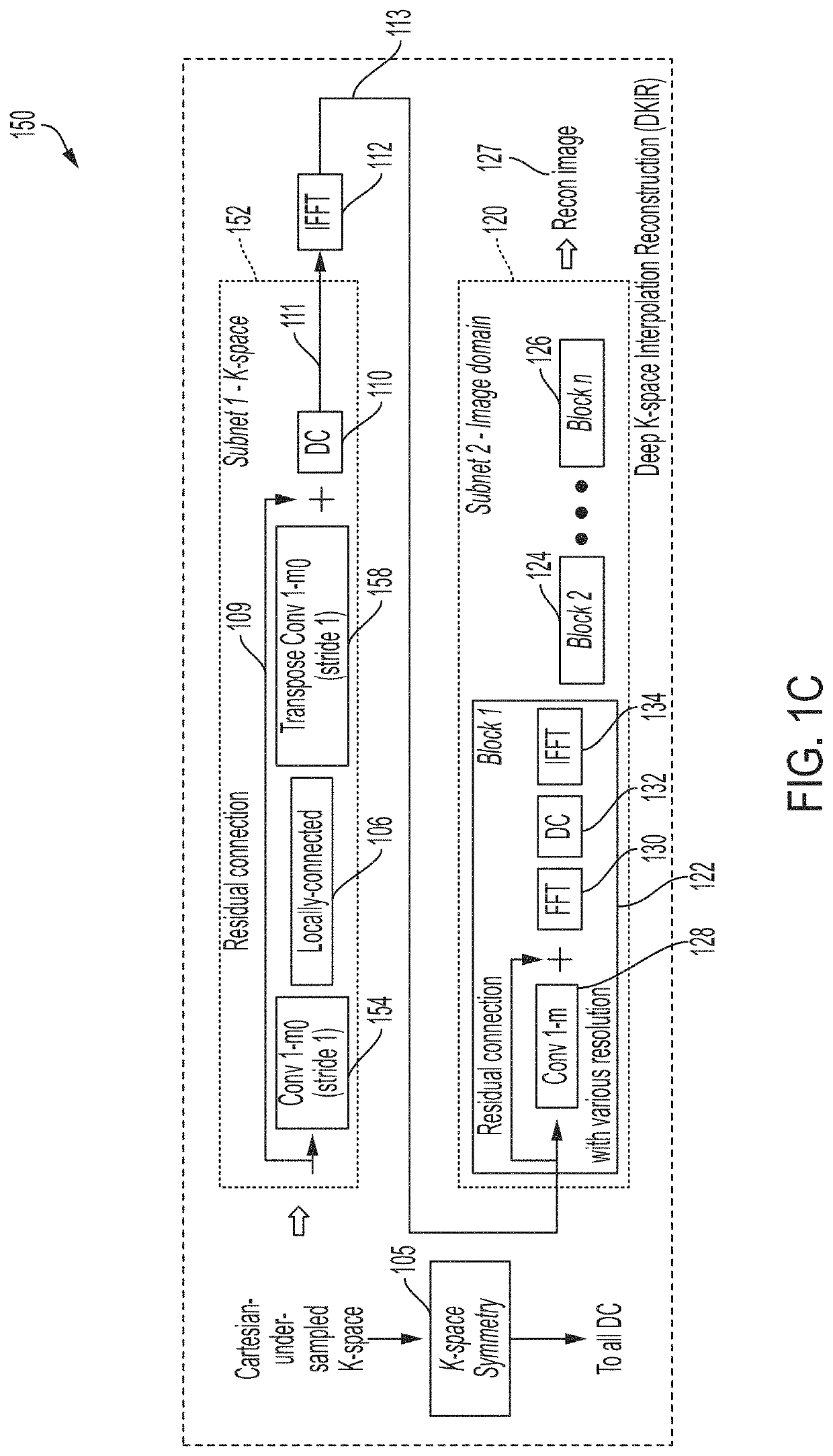Deep learning techniques for magnetic resonance image reconstruction
a magnetic resonance image and deep learning technology, applied in image enhancement, instruments, measurements using nmr, etc., can solve the problems of limited availability, relative high equipment cost, and long image acquisition process
- Summary
- Abstract
- Description
- Claims
- Application Information
AI Technical Summary
Benefits of technology
Problems solved by technology
Method used
Image
Examples
Embodiment Construction
[0054]Conventional magnetic resonance imaging techniques require a time-consuming MRI scan for a patient in a tight chamber in order to obtain high-resolution cross-sectional images of the patient's anatomy. Long scan duration limits the number of patients that can be scanned with MR scanners, causes patient discomfort, and increases the cost of scanning. The inventors have developed techniques for generating medically-relevant, clinically-accepted MRI images from shorter-duration MRI scans, thereby improving conventional MRI technology.
[0055]The duration of an MRI scan is proportional to the number of data points acquired in the spatial frequency domain (sometimes termed “k-space”). Accordingly, one way of reducing the duration of the scan is to acquire fewer data points. For example, fewer samples may be acquired in the frequency encoding direction, the phase encoding direction, or both the frequency and phase encoding directions. However, when fewer data points are obtained than ...
PUM
 Login to View More
Login to View More Abstract
Description
Claims
Application Information
 Login to View More
Login to View More - R&D
- Intellectual Property
- Life Sciences
- Materials
- Tech Scout
- Unparalleled Data Quality
- Higher Quality Content
- 60% Fewer Hallucinations
Browse by: Latest US Patents, China's latest patents, Technical Efficacy Thesaurus, Application Domain, Technology Topic, Popular Technical Reports.
© 2025 PatSnap. All rights reserved.Legal|Privacy policy|Modern Slavery Act Transparency Statement|Sitemap|About US| Contact US: help@patsnap.com



